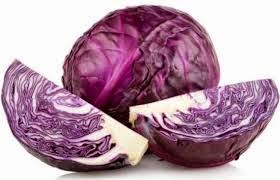Five foods that work miracles on digestive problems
Whether you have been diagnosed with a digestive disease or not, chances are you are suffering from some type of intestinal distress. We have wandered a long ways away from clean, unprocessed, and live foods. The resulting deficiency has left our guts raw and inflamed – a precursor to all sorts of diseases (many of them autoimmune).
In order to clean up the gut, we need some powerful foods to start repairing the damage, while we transition to a more gut friendly whole foods diet. These are five of them.
Aloe veraAloe vera is a special plant known as the “lily of the desert”. Although it has been historically used topically to treat open wounds, ulcers, burns, and infections, in recent years it has become popular due to the fact it can also treat these types of conditions internally.
Due to its very high enzymatic content; its antibacterial, antifungal, and antiviral properties; and the fact that it is a powerful anti-inflammatory, aloe vera is a boon to anyone suffering from digestive complaints. It has been used successfully to treat a wide variety of conditions related to the gut, including:
• Ulcers, IBS, Crohn’s disease, colitis, and other digestive disorders
• Candida infections
• Parasitic infections
• Acid reflux
• Constipation
Be careful when choosing aloe vera as some brands may contain preservatives like sodium benzoate, which are very harmful to the intestinal lining.
Bone brothBone broth is an excellent option for healing and sealing the gut, provided it is made from the carcasses of animals fed clean and nutritious diets. It is also easily digestible and contains many valuable nutrients to heal the gut.
One of these nutrients is gelatin, which protects and heals the mucosal lining of the digestive tract and also assists in the digestion of nutrients. It also contains high levels of the amino acids glycine and proline, which are very anti-inflammatory.
Coconut kefirCoconut kefir (fermented coconut water), is a probiotic and enzyme rich beverage that promotes healthy bacterial balance and helps cleanse the liver.
Coconut kefir will enhance hydration and recolonize your gut and mucous membranes with a wide variety of beneficial microflora. It also contains beneficial yeasts that seek out and destroy pathogenic yeasts in the body (like Candida) as well as helping clean, strengthen, and purify intestinal walls so it can become more resistant to dangerous pathogens like E. coli, salmonella, and parasites.
Coconut kefir also helps assimilate nutrients in the gut and enhances the usage of certain trace minerals and B-vitamins. For a simple recipe, check out the first source.
Flax seed teaFlax seed tea is excellent for healing the colon, especially if you suffer from leaky gut syndrome or irritable bowel. It is an excellent source of omega-3 fatty acids, soluble fiber, and lignans, which create an anti-inflammatory and lubricating effect that are critical to regaining proper digestive health.
This tea eliminates the problems associated with eating whole flax seeds (which do not digest properly), and is a bit easier to digest than flax meal. To make, simply poor 12 ounces of boiling water over a tablespoon of flaxseeds and let steep overnight. Drain and drink the liquid.
Red cabbageGlutamine is a critical part of our digestive system and helps prevent and rebuild a leaky gut. Glutamine has been shown to be effective in people with ulcerative colitis, celiac disease, Crohn’s disease, and irritable bowel syndrome.
Red cabbage is considered the most dense vegetable form of L-glutamine. A great way to assimilate it is through juicing or fermenting. Try fermenting it and adding apple cider vinegar to it to create an abundance of enzymes and beneficial bacteria that allow amino acids and other nutrients to be more easily absorbed and used by the body.
The biggest hurdle to healing the gut is recognizing problems before they become full-blown and extremely difficult to manage. To head off that nightmare, check out Candida Infection? Try the Spit Test! to see if this insidious condition is about to plague your health, and then kill Candida and balance your inner ecosystem.
Sources: http://complete-health-and-happiness.com/five-foods-that-work-miracles-on-digestive-problems/









